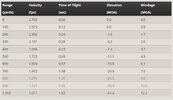Ignition Override
Member
The ammo is new-production Swiss "7,62x51" (not outsourced). The rifle is an Aussie FAL with 21" barrel (very nice rifling and shine) on an Imbel upper, which has been tweaked in a few ways by the US' best FAL gun smith - Mark Graham of ARS.
Exactly like the photo except for a wooden carry handle.
One this rifle hits ok at 100 yards, I will try it on a gong at 200 yards, then even 300 yards.
The problem is that either grass/weeds and moist soil generally surround these metal plates. So you can seldom know where the Missed bullets go (missing the entire plate). All of these plates are in a 500-yard gulley.
--If you Don't hear a Thunk, unless a buddy can be there to try to "spot" for corrections, you don't know whether your bullets go above, below, or to which side of these gongs..

Exactly like the photo except for a wooden carry handle.
One this rifle hits ok at 100 yards, I will try it on a gong at 200 yards, then even 300 yards.
The problem is that either grass/weeds and moist soil generally surround these metal plates. So you can seldom know where the Missed bullets go (missing the entire plate). All of these plates are in a 500-yard gulley.
--If you Don't hear a Thunk, unless a buddy can be there to try to "spot" for corrections, you don't know whether your bullets go above, below, or to which side of these gongs..




